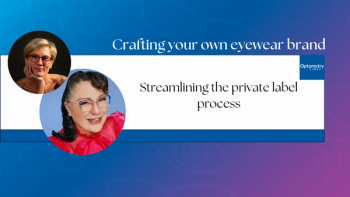
CIME 2025: Kristin Barnes, OD, on early detection and effective treatment of Demodex blepharitis
At the Controversies in Modern Eye Care meeting, Kristin Barnes, OD, lead optometrist at the Maloney-Shamie-Hura Vision Institute, shared valuable clinical insights into diagnosing and managing Demodex blepharitis, a common yet often underdiagnosed condition affecting the lid margin. Controversies in Modern Eye Care took place May 4, 2025, in Los Angeles, California.
A quick but crucial slit lamp tip
According to Barnes, the most effective tool for identifying Demodex blepharitis is simple: Ask the patient to look down during the slit lamp exam. “It takes 2 seconds. Just have them look down, and then you'll be able to see the collarettes at the lid margin base,” said Barnes.
This small adjustment can help clinicians more reliably detect the presence of Demodex mites, leading to more accurate diagnoses and timely treatment.
Comprehensive examination beyond symptoms
Barnes emphasized a holistic approach when evaluating patients with potential Demodex involvement. Key elements of her diagnostic process include the following:
- Corneal staining with sodium fluorescein to assess for superficial punctate keratitis
- Evaluation of meibomian glands for signs of capping or disruption
- Inspection of the lid margin and lashes
- Review of patient history, particularly for comorbidities such as rosacea
“Rosacea is an important factor we consider because of its strong association with Demodex,” she noted.
A game changer in treatment
Barnes expressed strong enthusiasm for lotilaner ophthalmic solution 0.25% (Xdemvy; Tarsus Pharmaceuticals), the first FDA-approved treatment specifically indicated for Demodex blepharitis. “It’s so much better than tea tree oil, lid wipes, and scrubs,” she said. “Those options were uncomfortable and didn’t work well.”
Lotilaner’s twice-daily dosing over 6 weeks has shown significant efficacy in eradicating mites and improving patient symptoms. The simplified regimen and noticeable results contribute to higher adherence—a long-standing challenge in ophthalmic therapy.
Patient engagement and adherence
Barnes highlighted the importance of patient education and engagement in improving treatment adherence. She shares before-and-after photos with patients to show the difference in eyelash health post treatment, which helps motivate adherence.
“They get excited. Their first question is, ‘Are my mites gone?’ That excitement improves compliance, which is essential,” she said.
Key takeaways for optometrists
- Have patients look down during slit lamp exams to reveal lid margin collarettes, a hallmark of Demodex.
- Be thorough in ocular surface evaluation, especially in patients with rosacea or unexplained ocular irritation.
- Lotilaner offers a safe, effective, and well-tolerated treatment option, significantly better than past OTC remedies.
- Patient education enhances adherence — visuals and follow-up discussions can drive long-term success.
Barnes concluded, “Now that we have this treatment, Demodex will be diagnosed and managed more effectively in clinical practice.”
Newsletter
Want more insights like this? Subscribe to Optometry Times and get clinical pearls and practice tips delivered straight to your inbox.















































.png)


